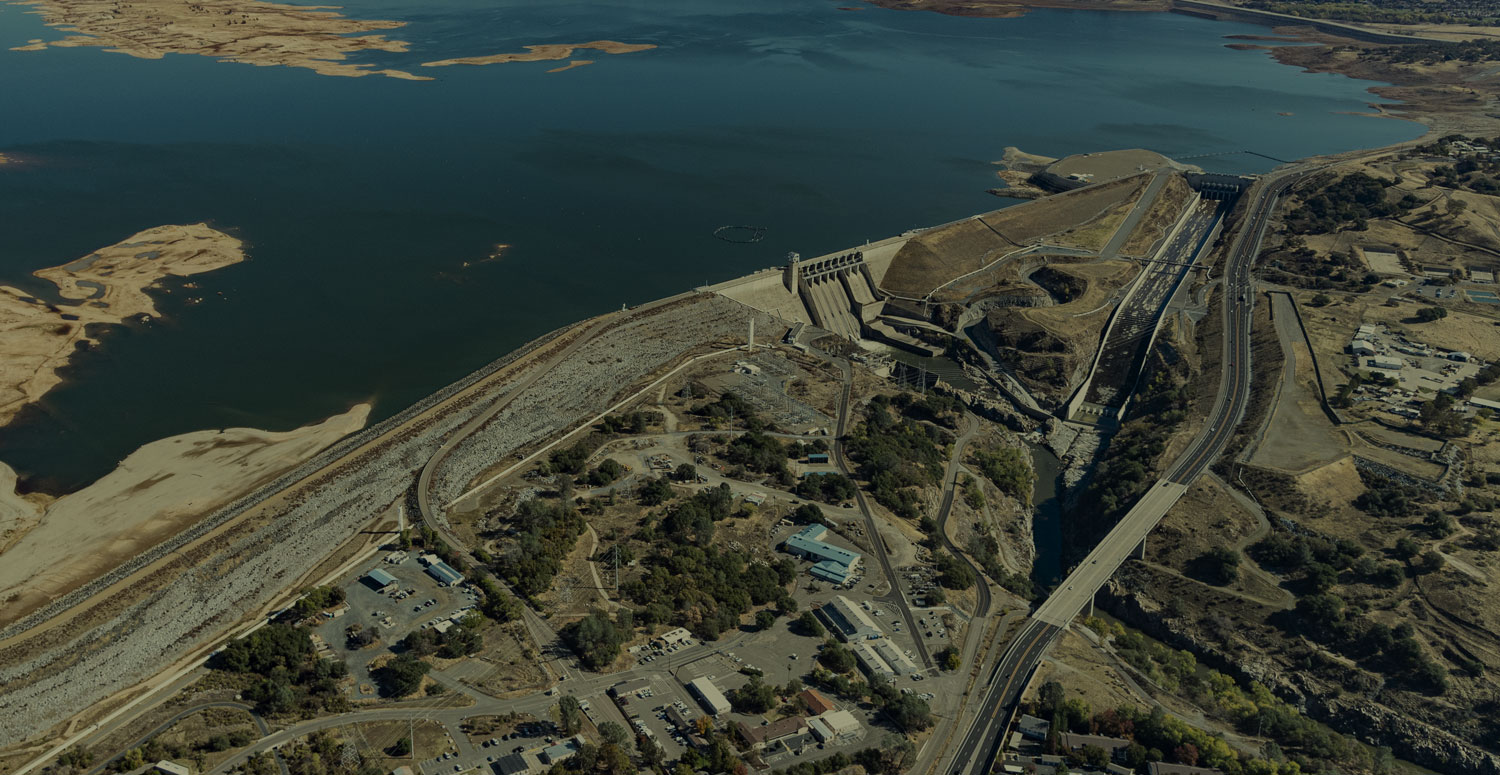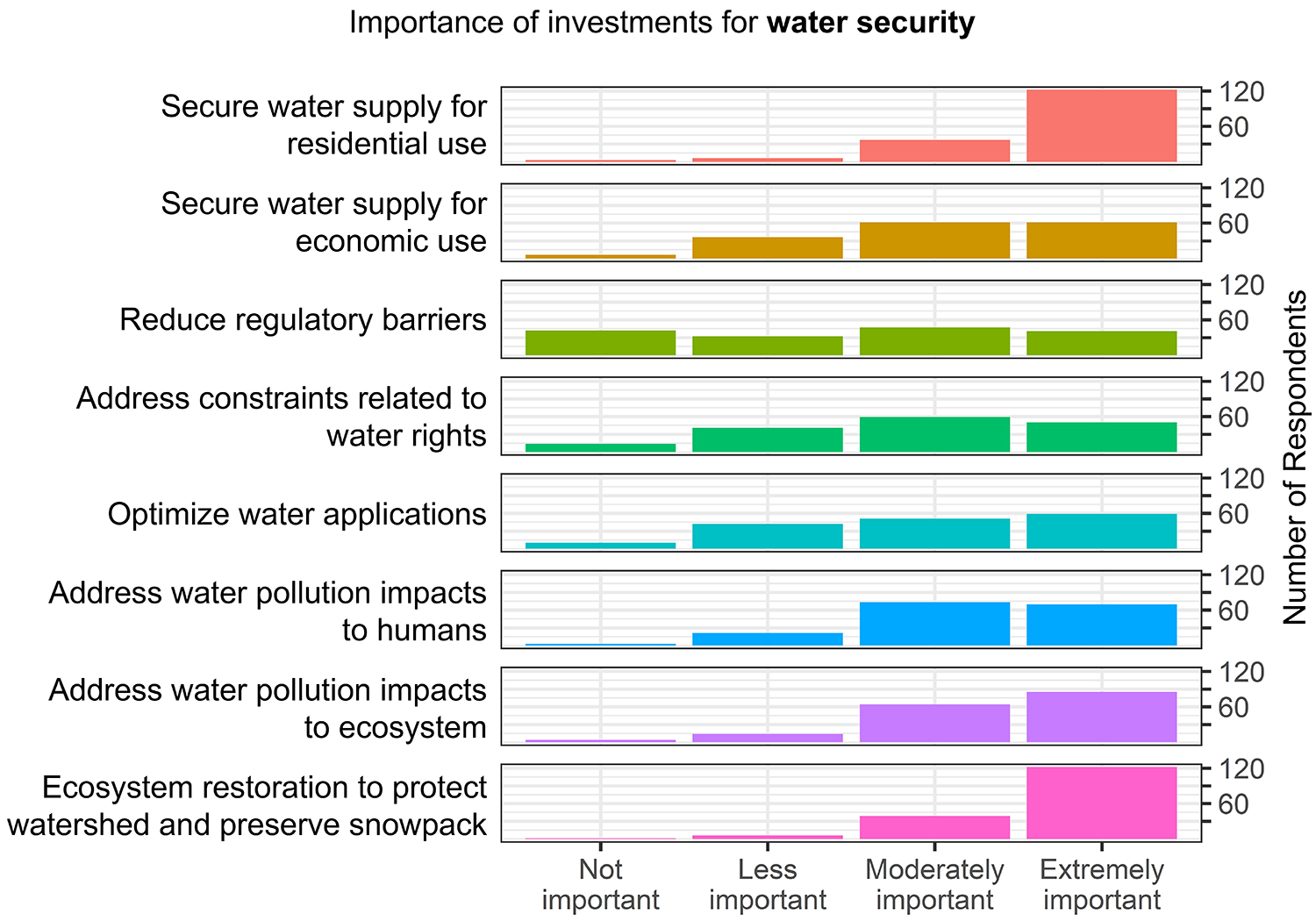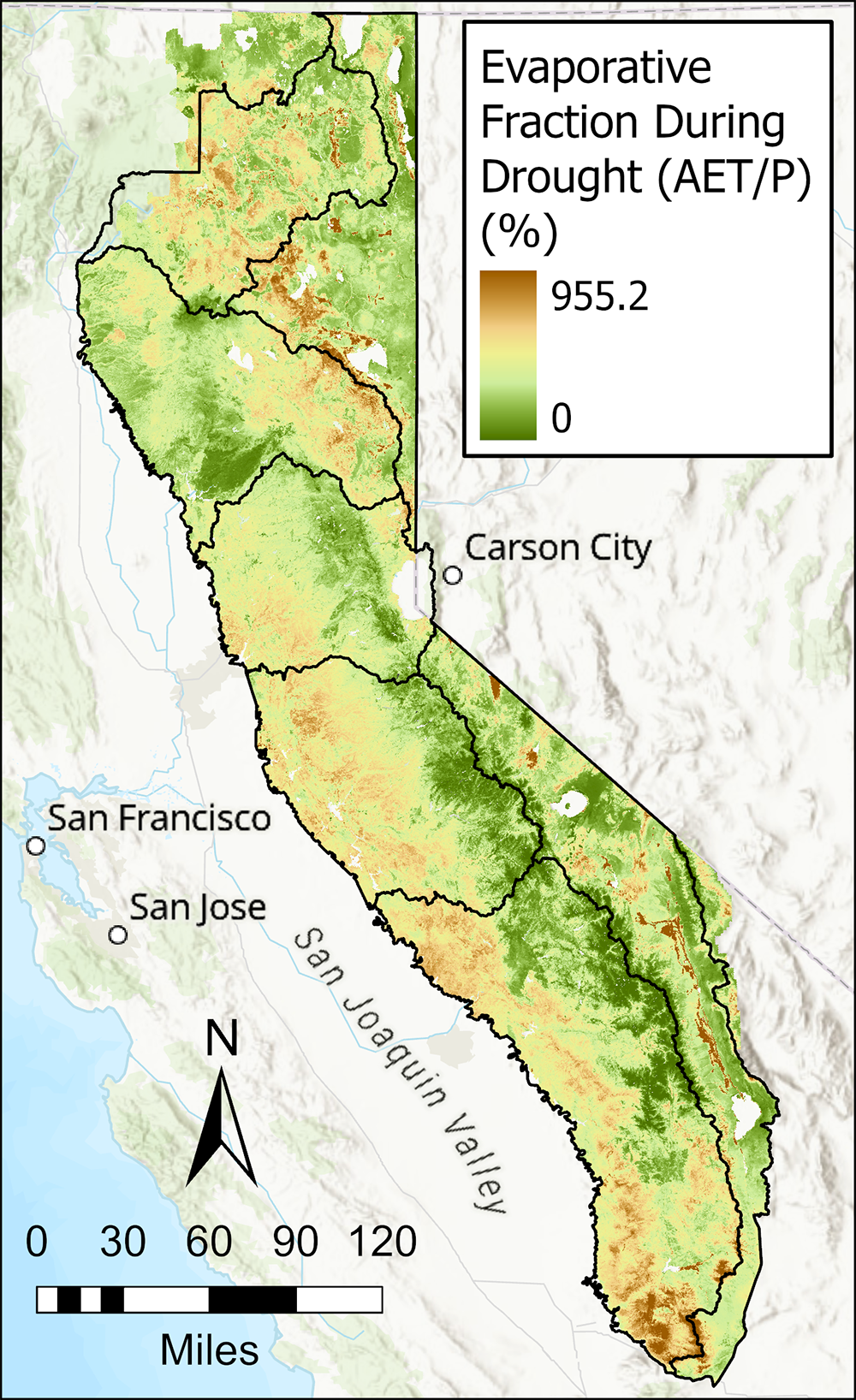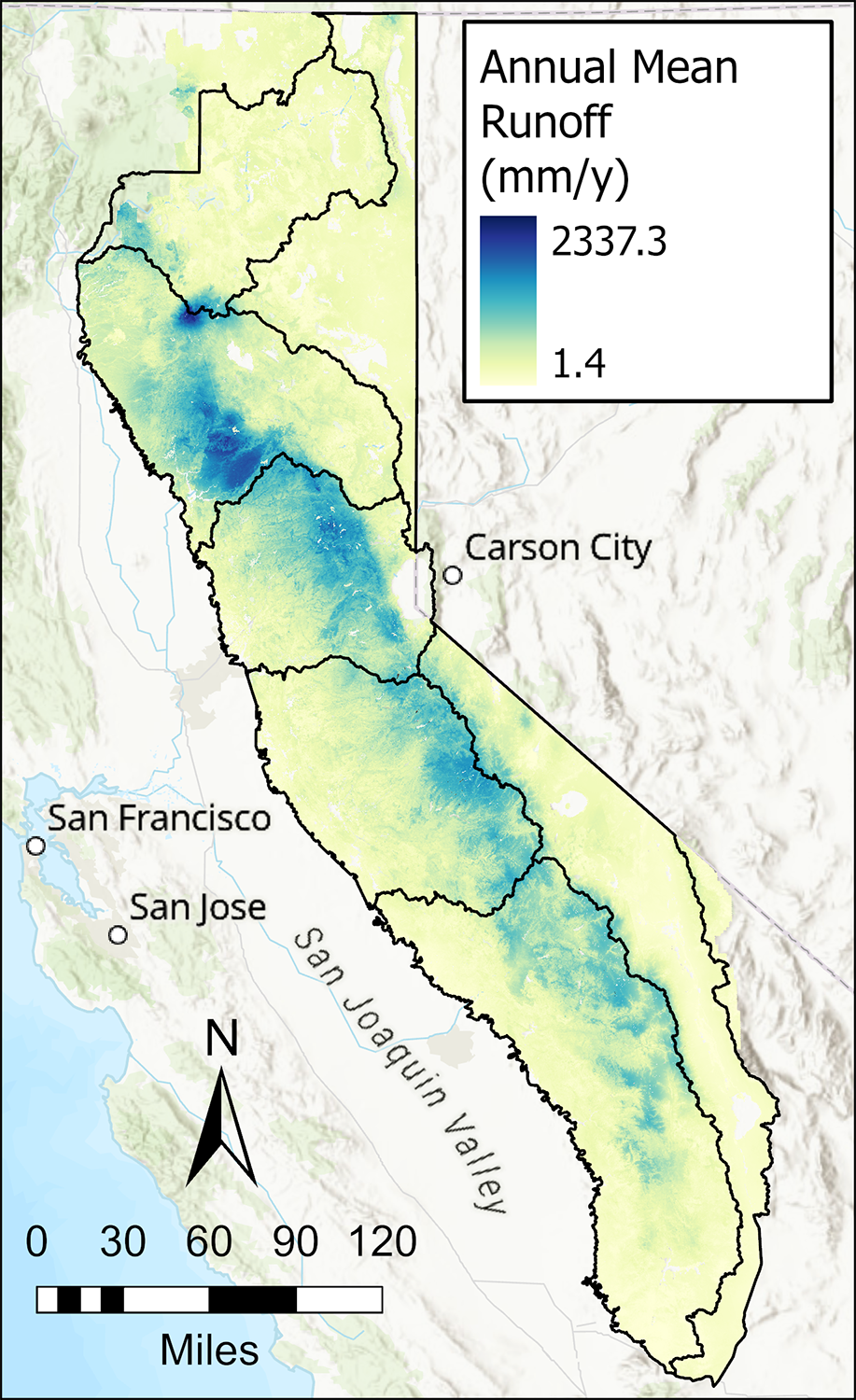Sierra Nevada Regional Profile
Water Security

Overview
The Sierra Nevada region is crucial to California’s water security. More than 75% of the state’s residents receive water from, and nearly half of its hydroelectric power is generated in, the region. Much of this water supply is stored as snowpack. However, because of climate-driven warming temperatures and more rain than snow, the Sierra Nevada snowpacks are expected to shrink by 60% across most of the range. Greater competition for water resources impacts agricultural irrigation, hydropower production, balancing salinity of delta ecosystems, and providing sufficient cold water for salmon downstream from dams.
Changes in water availability will also contribute to further drying of fuels and the corresponding elevated risk of severe wildfire and shifts in streamflows and flooding. Increased potential for flooding threatens state water infrastructure, sensitive ecosystems, and the public safety of downstream communities.
Proactive management actions and investments can reduce erosion, protect and improve hydrological function, and, ultimately, increase water security. For instance:
- Meadow restoration can improve watershed functionality and increase groundwater storage
- Thinning forests can promote the health of the remaining trees by reducing competition for limited water resources
- Upgrading and maintaining water infrastructure (e.g., larger culverts) can better protect communities and water resources from potential flood damage.
The value proactive management offers has prompted some water agencies to become active partners in forest management projects, such as the French Meadows Forest Restoration Project. Investing in the health of the Sierra’s watersheds both before and after disturbances occur has the potential to offer numerous ecological and societal co-benefits.
Stakeholder Perspectives

Investing in secure water supply for residential use and ecosystem restoration to protect watersheds and preserve snowpacks were ranked as “extremely important” by most survey respondents. Interviewees stressed the need to prioritize key watersheds for forest treatments. Local governments and communities may struggle to rebuild damaged water infrastructure after fire, which affects water security for extended periods. Improving local access to disaster recovery funding could help address this.
Resource Conditions
Water security can be assessed in terms of actual evapotranspiration/precipitation (AET Fraction) and annual mean runoff.
Actual Evapotranspiration/Precipitation

Actual evapotranspiration is the combined amount of water that evaporates from the land surface in addition to the water that is lost as vapor from plants. AET Fraction represents the percentage of water needed by plants that is provided by precipitation during a severe 4-year drought. This metric estimates the moisture stress that would be experienced by the vegetation during drought; values > 100% indicate moisture stress. Both forest management and disturbances like wildfire can affect AET Fraction by reducing the amount of vegetation at a site and thereby lowering the amount of water needed by plants.
Annual Mean Runoff

Annual mean runoff is the surplus water discharged from a location in the form of surface or groundwater flows. This metric is important for water security because it estimates the amount of surplus water for downstream use. Both forest management and disturbances like wildfire can affect runoff in part by changing the vegetation conditions at a site. For example, forest treatments that thin trees in moisture-stressed areas may increase runoff and provide more water availability downstream.
